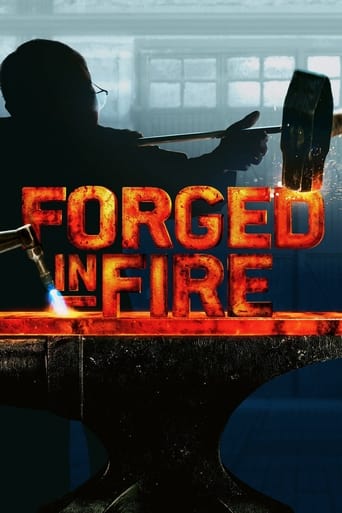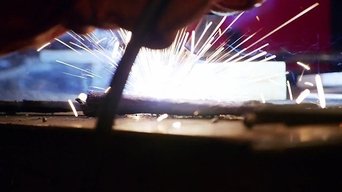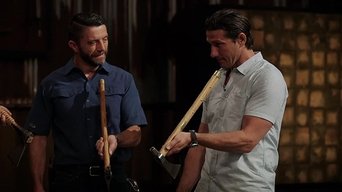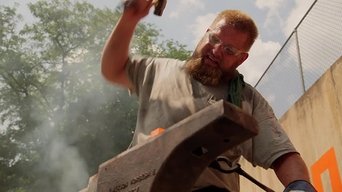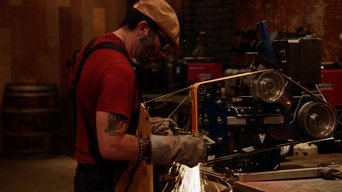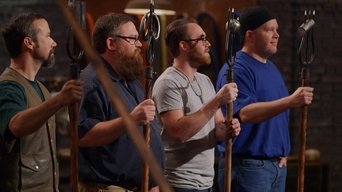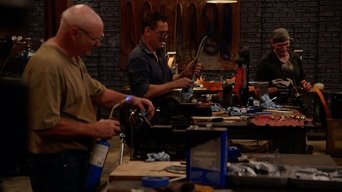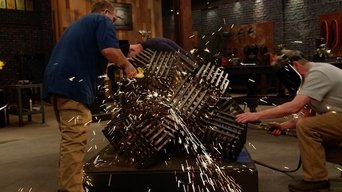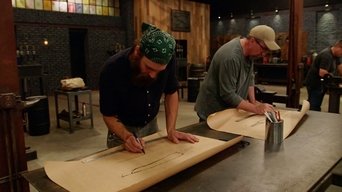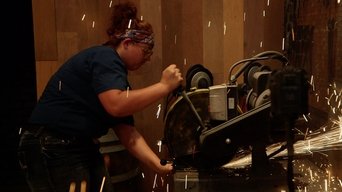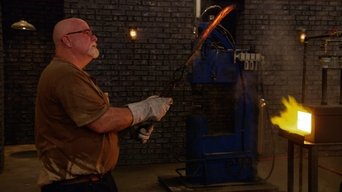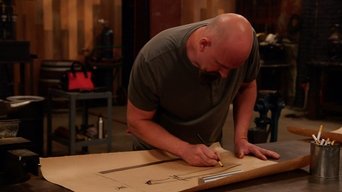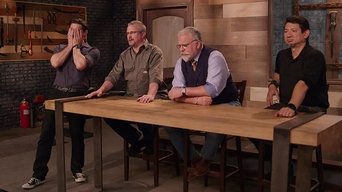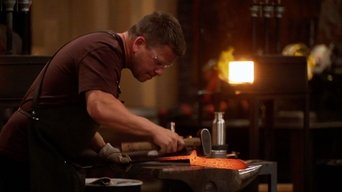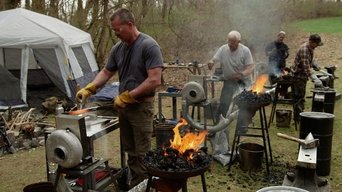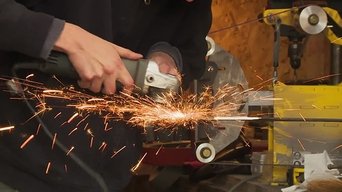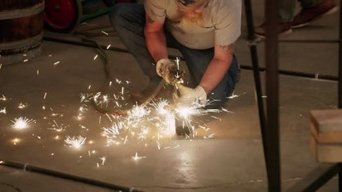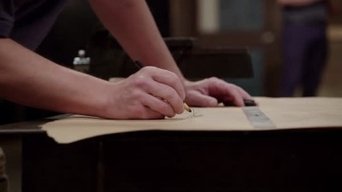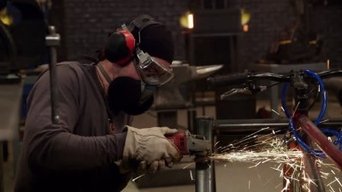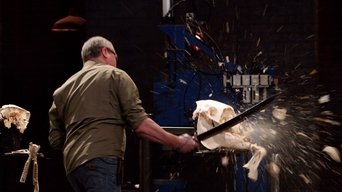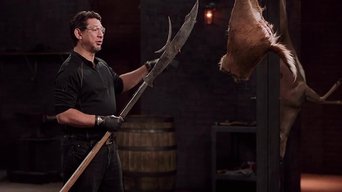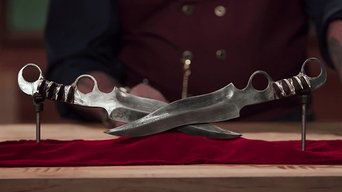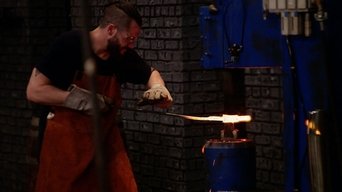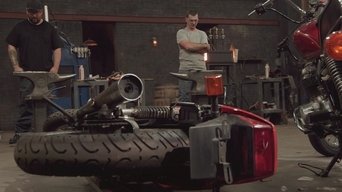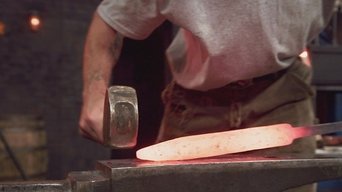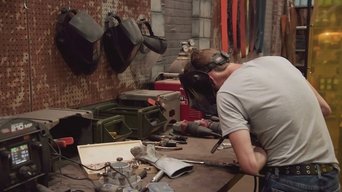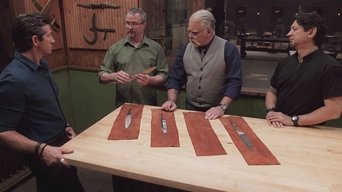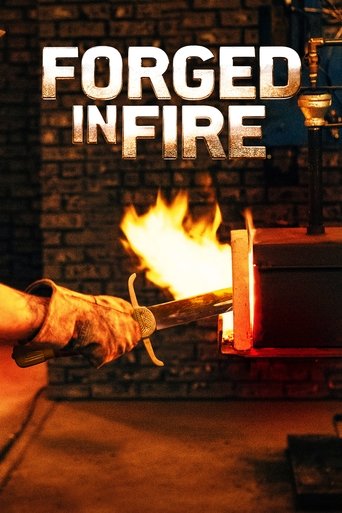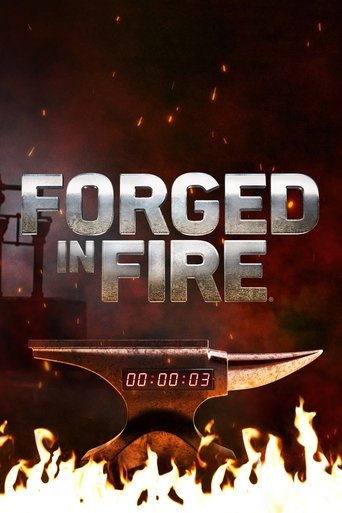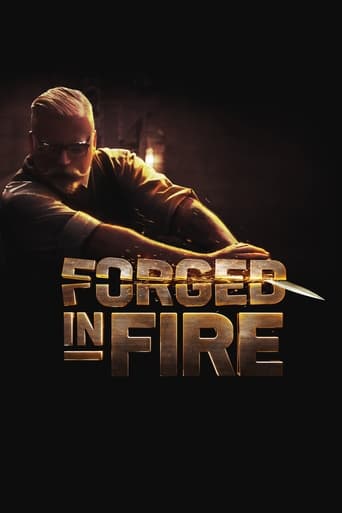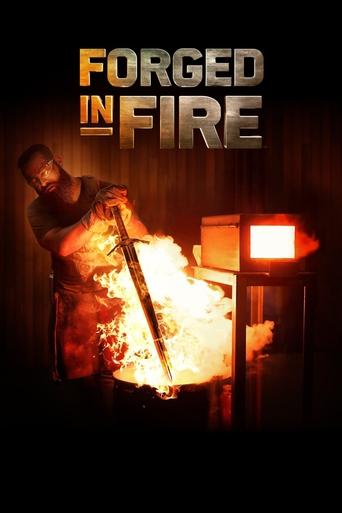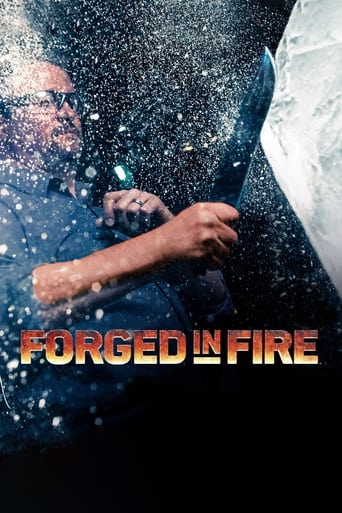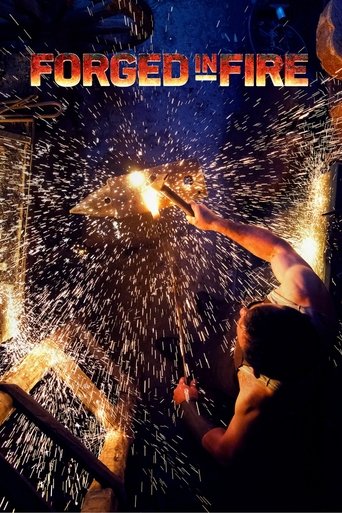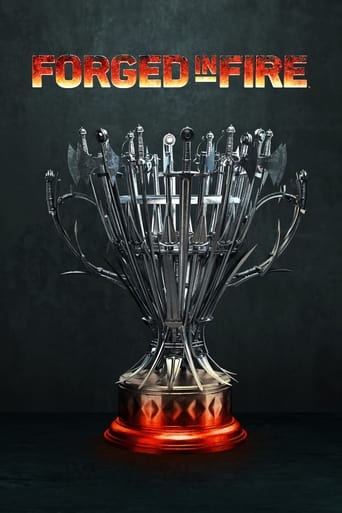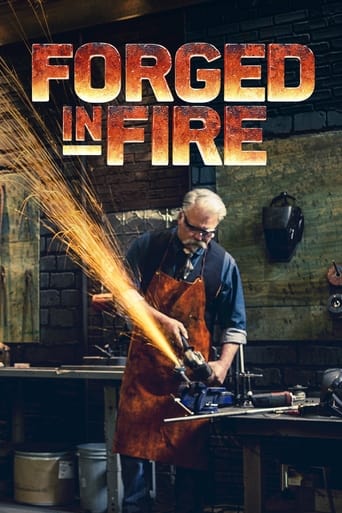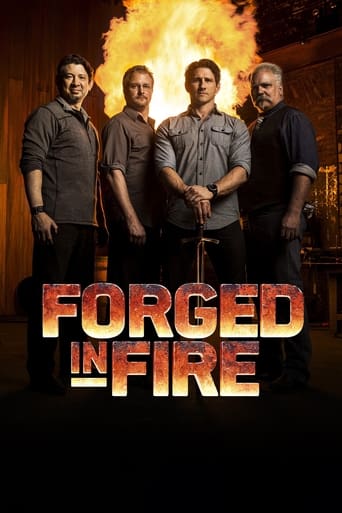Forged in Fire Season 5
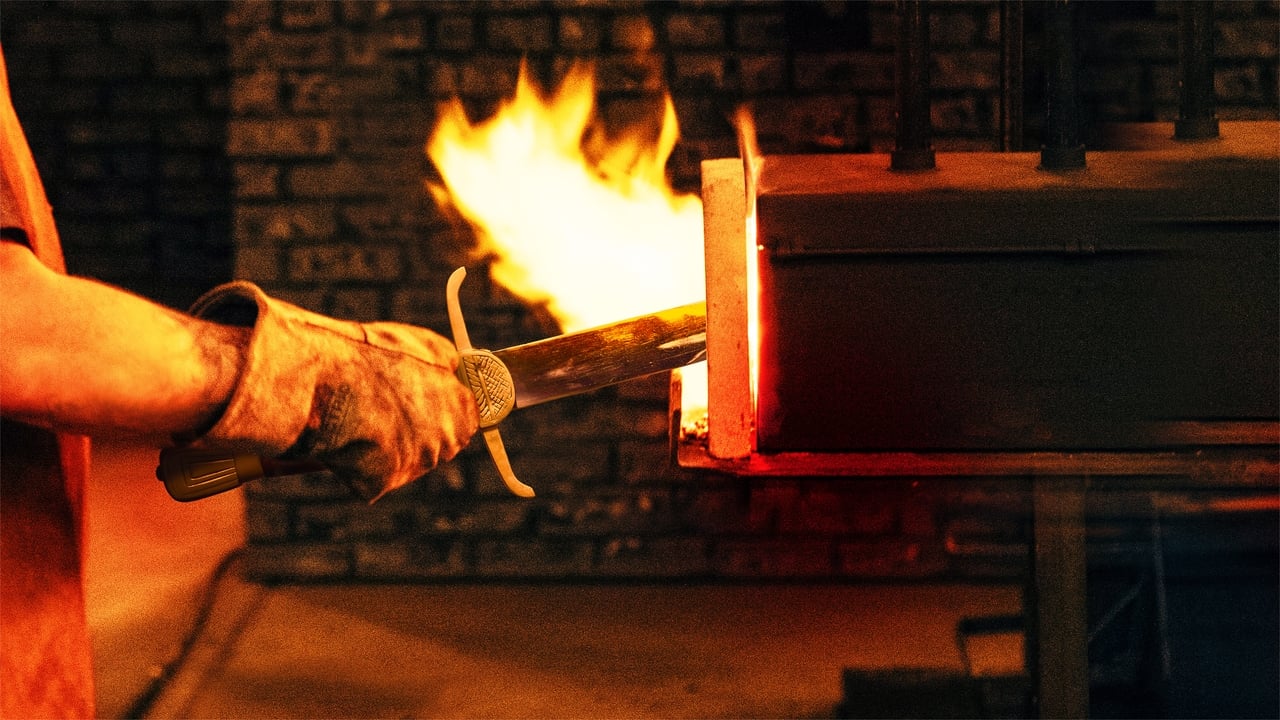
Competitors re-create weapons from historical periods ranging from Japanese katanas to medieval broadswords to ancient throwing blades. Each entry is judged on its artistry as well as its functionality and accuracy.
Watch NowWith 30 Day Free Trial!
Forged in Fire
2015 / TV-PG





Competitors re-create weapons from historical periods ranging from Japanese katanas to medieval broadswords to ancient throwing blades. Each entry is judged on its artistry as well as its functionality and accuracy.
Watch Trailer
With 30 Day Free Trial!
Forged in Fire Season 5 Full Episode Guide
Four bladesmiths must each forge judge Ben Abbott's favorite blade, the Celtic ring knife, using the San Mai technique; the final two competitors return to their home forges to re-create Irish ring hilted swords.
AD
Four bladesmiths are challenged with forging a canister Damascus knife using only steel wool and 1095 powder; the final two head home to re-create an important weapon from North American history - the pipe tomahawk.
AD
Four bladesmiths must build coal forges using materials scavenged from a storage unit and forge signature blades without any power tools; the remaining two smiths return home to recreate a bardiche, a brutal European pole axe.
AD
Four bladesmiths are tasked with forging a Crusader's dagger from a thick rod of W1 steel; the final two smiths must create Robin Hood's steel takedown bow.
AD
Four bladesmiths must create signature slasher blades, each using a different type of metal; the two finalists return to their home forges to recreate the Grim Reaper's scythe.
AD
In the final round of the Invitational Tournament, the winning farrier, armorer, blacksmith and modern metal worker face off to forge a wakizashi; the two finalists must then re-create the nodachi, one of the largest Japanese swords.
AD
Four bladesmiths must harvest materials from a metal sculpture to forge a needle point Damascus blade; the remaining smiths return to their own home forges to recreate a sword from the elite classes of Renaissance Europe: the Flamberge Rapier.
AD
Four bladesmiths must forge a signature Damascus blade using steel from tools; the smiths that survive two brutal rounds of testing return to their home forges to recreate a multipurpose Medieval weapon of war: the Knightly Poleaxe.
AD
Four bladesmiths must forge a Damascus blade out of something familiar: plate armor; the remaining two bladesmiths head back to their home forges to craft an exotic hybrid of pain and protection: the Hooded Katar.
AD
Four bladesmiths are tasked with creating a San Mai blade from horseshoes and hoof rasps; the remaining two bladesmiths return to their home forges to create a famed weapon of the English Civil War: the Mortuary Sword.
AD
Four bladesmiths must craft a signature blade from a massive piece of elevator cable; the final two competitors return home to re-create a sword wielded by some of history's fiercest soldiers: the Two-Handed Landsknecht Sword.
AD
The bladesmiths are tasked with creating a signature Damascus blade out of three different steels of different thicknesses; the two final competitors re-create one of the most intricate weapons in show history: the steel crossbow.
AD
Four bladesmiths pay homage to Hollywood; a survival knife; the final two smiths return home to re-create one of the most famous swords in cinematic history: Hattori Hanzo's 1,000-layer katana from Quentin Tarantino's "Kill Bill."
AD
Four bladesmiths take a shot at forging a signature blade from the steel rings of a whiskey barrel. They must quickly adapt when they realize there may not be enough hardenable steel to go around. After an intense round of testing, the final two smiths head home to forge an instrument of Chinese warfare: the qinglong ji.
AD
Four bladesmiths must forge a fully functional serrated knife using steel from hand scissors; the remaining two competitors return to their home forges to create a unique and challenging weapon from history: the Sengese.
AD
AD
Four bladesmiths are taken out of the forge and transported to the great outdoors, where they struggle to forge a blade in the noonday sun. They must forage for outdoor materials and crank a coal forge, which leaves some scrambling to the end. After a second smith falters during testing, the two remaining smiths return to their home forges to create the ultimate wilderness weapon: the German sawback hunting sword
AD
The bladesmiths are tasked with creating their signature blade out of a massive ball bearing. Ultimately, two smiths return to their home forges to recreate the kilij, a lethal saber from the Ottoman Empire.
AD
The bladesmiths must forge a signature blade from W2 and a giant industrial-sized nut. Then, they face two unforgiving strength tests. Ultimately, only two smiths advance and head back to their home forges to recreate the Celtic Anthropomorphic Sword, an iconic ancient iron weapon.
AD
Four bladesmiths are tasked with forging friction folders from a huge steel coil; in the final round, the two remaining smiths head back to their home forges to create a blade that requires both precision and detail: the French smallsword.
AD
Four bladesmiths are tasked with forging a signature blade from a bicycle. After major setbacks and time-consuming failures, each smith is pushed to their limit as they race to the finish before the clock hits zero. Ultimately, two smiths advance and are shocked to learn that they must recreate an ancient weapon, the Wind and Fire Wheels.
AD
Four smiths must forge a multipurpose weapon from old rescue tools; after narrowly escaping elimination, two smiths head back to their home forges to recreate a unique utilitarian tool, the Russian Pioneer Sword.
AD
Four blade smiths must forge a Marine K-Bar all-purpose knife from multiple small blocks of steel. Ultimately, two smiths manage to reach the final round where they must recreate the iconic Glaive Guisarme polearm.
AD
The bladesmiths are forced to make canister Damascus using nuts and bolts, and the twists and turns of the challenge may be more than they can handle. Ultimately, two smiths avoid getting canned and move on to the final round where they must recreate a pair of deadly Indian Bagh Nakh weapons.
AD
The bladesmiths must make their signature blades out of only drill bits and a chunk of mild steel, but untwisting the bits and combining the two steels proves almost impossible. After two rounds, only two smiths survive the chopping block and are sent back to their home forges to recreate a beautiful, but deadly Indonesian sword — the Kelewang. A final round of testing proves that victory lies at the junction between form and function.
AD
Four bladesmiths must figure out how to hack it when they are tasked with crafting a hatchet from pieces of odd shaped steel. After several forging failures, parameter mishaps, and intense conditions -- only two smiths head back to their home forges where they must recreate the deadly Maasai Lion Spear. Who will come out roaring and leave with $10,000 and the pride of becoming a Forged in Fire Champion?
AD
Four bladesmiths are pushed to their limits when they each must forge a signature blade from small springs of steel. Wonky welds and broken billets cause major setbacks that must be corrected before the time runs out. Ultimately, two smiths manage to turn their setbacks into comebacks to secure a spot in the final round where they must recreate the deadly Horseman's Axe. Which smith will join the ranks of Forged In Fire champions and return home with the $10,000 prize?
AD
In a special military themed episode, four bladesmiths, all veterans of the U.S. Armed Forces, dive into the fray when they are tasked with forging a combat knife from an anti-tank hedgehog. After two grueling rounds of competition filled with frustration and a medical emergency, the final two smiths advance and head back to their home forges to recreate another military favorite, the M1917 Naval Cutlass. Which veteran has the mettle to drive to glory and earn the rank of Forged in Fire Champion?
AD
The smiths are forced to harvest steel from motorcycles to forge blades in their signature style, but things don't go according to plan; and after an intense race to the finish, the final two competitors have only five days to recreate a giant Indian two-handed sword.
AD
The pressure is on as the Smiths are tasked with forging Dave Baker’s favorite blade, the Scottish Dirk. Can they master the difficult design of this weapon, and live up to the high expectations of their expert judge? With a sharp edge over the competition, two smiths head home for the final round to recreate the German Halberd, a medieval era triple threat. Which smith will stake their claim as Forged In Fire Champion and hook in the $10,000 prize?
AD
Four bladesmiths test their mettle in a rock quarry, where they're tasked with making blades using only harvested steel and coal forges. Over the course of two intense rounds, the smiths show their true grit constructing a blade while fighting the elements. After brutal tests designed to chip away at the competitors' resolve, only two smiths advance to the final round. Back at their home forges, they must recreate one of the most dangerous folding weapons in history — the Spanish Navaja.
AD
Four blade smiths find the devil is in the details when they must combine two or more steels to forge J. Nielson's favorite blade, a Damascus European dagger. In a challenge where symmetry and precision can make or break a blade, two smiths produce knives that survive J.'s merciless tests. In the final round, they have five days to forge a fearsome pole weapon–the Zande Spear.
AD
Four bladesmiths must kick their skills into gear when they’re tasked with forging blades out of steel from a chain and a sprocket, but only two will secure a spot in the final round, where they have five days to forge the iconic karabela saber.
AD
Four master smiths compete alongside their apprentices to forge an iconic weapon of warfare: the trench knife; each team must work together, tagging in and out every half hour, with only one smith allowed to touch the knife at a time.
AD
Parts from a salvaged cannon are used to make signature blades, and in the end, two smiths re-create the North African Kabyle flyssa in a final round, which will determine whose blade launches them to becoming the next champion
AD
Smiths must forge functional friction folders and find the critical junction where skill meets resiliency; two finalists must recreate a Japanese trident called the Jumonji Yari, a weapon of unparalleled strength.
AD
The smiths must forge a signature blade out of a 50-caliber flintlock pistol; despite giving it their best shot, it becomes a struggle to turn a gun into a blade and after two grueling rounds, two smiths get sent barreling towards elimination.
AD
The bladesmiths begin on a farm where they must harvest steel from farming tools, then use coal forges to make their signature blades with a hidden lanyard hole; the two remaining smiths must recreate the Schiavona.
AD
Five novice smiths must earn their way into the competition because one smith will be sent home before the forge lights up; the two left standing must re-create a 16th-century weapon known as the War Golok.
AD
Free Trial Channels
Seasons


